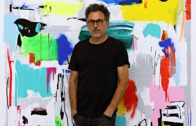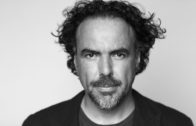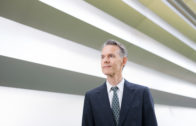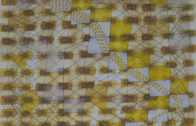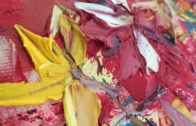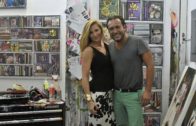
Santiago Picatoste
Artist Spring 2023
“Everything you need, already belongs to you”
Santiago Picatoste. Palma de Mallorca. Spain.1971.
Artist Santiago Picatoste
Santiago Picatoste studied Fine Arts at the Escuela Libre del Mediterráneo in Palma, Mallorca. He received the Graphic Arts Scholarship of the Pilar and Joan Miró Foundation in Palma and the Plastic Arts Scholarship of the Casa de Velázquez in Madrid.
He won the IBEART first Painting Prize at the ABC Museum in Madrid, was a finalist at the Premios Generación of La Casa Encendida in Madrid, and won the honorable mention at the International Sculpture Prize of the Gabarrón Foundation, among others.
His work is in several important collections such as the Giorgio Cini Foundation in Venice, the La Caixa Foundation in Barcelona, the Flingthon Collection in Copenhagen, the CAC in Malaga or the Carmen Thyssen-Bornemisza Collection in Madrid.
He has participated in around 30 solo shows and more than 90 group shows in countries as diverse as Spain, the United States, Denmark, England or Italy.- At present, Picatoste is represented by Galería 3 Punts in Barcelona and Gärna Gallery in Madrid.
‘At the moment, my process usually involves working on several paintings at the same time. It is a way of expanding my gestural reach, a sharp contrast to the traditional painter at an easel — my studio is an industrial warehouse and I work on the floor horizontally, then vertically’.
Mapped Series

Atlas Series

‘Chaos and order reflect a way of being, a ‘leitmotif’. I work instinctively, revealing gestures in my abstraction. I have free rein to that way of working — resulting in ‘action painting’ which is Abstract Expressionism. The expression is chaos and order is the balancing feature – this aesthetic of abstraction interests me’.
Meet Santiago Picatoste
1. What was your first contact with art and what made you become an artist?
One day I realised that I had never stopped painting. I was heavily influenced by my father, who was a bohemian, musician and ceramic artist. From an early age, I was aware that apart from ballpoint pens, markers and crayons, there was always paint and I signed up for a ‘landscape study’ class which was a private lesson at the ‘Academia Libre del Mediterráneo’, a wonderful name for a school of painting in Mallorca. There I learned chiaroscuro, foreshortening, painting with real models and was formally introduced to the Fine Arts.
2. Are you like a harmonious choreographer of gestural art and colour? What do your action paintings share with viewers ?
Chaos and order reflect a way of being, a ‘leitmotif’. I work instinctively, revealing gestures in my abstraction. I have free rein to that way of working — resulting in ‘action painting’ which is Abstract Expressionism. The expression is chaos and order is the balancing feature – this aesthetic of abstraction interests me.
3. What is your creative process?
I continually surprise myself with the creation process and use risky materials. The traditional and the industrial are present in my work; a symbiosis between these two concepts. Among the traditional materials that I use are oil paints, acrylics, waxes and industrial materials such as ‘spray painting’, industrial chloroform, synthetic enamels, aluminum… all from the industrialised field. I use the alchemy of production in my work. At the moment, my process usually involves working on several paintings at the same time. It is a way of expanding my gestural reach, a sharp contrast to the traditional painter at an easel — my studio is an industrial warehouse and I work on the floor horizontally, then vertically.
4. Let’s talk about color and the hyper-aesthetics of abstraction. Is it your obsession or a constant revision?
At the beginning of my artistic career I did not use color. The island where I was born, Mallorca, has an exultant nature. When I moved to other cities and countries, I lived in Madrid and New York, I realised the importance of light. It became a physical-chromatic need because I remember two things from the History of Art: the first, what Henri Matisse said about color, that it should delimit the work and not the characters that appear in it. The second, the discourse of the Impressionists versus the discourse of the school of Jean Auguste Dominique Ingres. There was a great debate about drawing and colour. The Impressionists defended that with color one could speak, becoming early Expressionism in a way. These concepts became so fundamental to my practice. I’ve recently incorporated Pop Art aesthetics that push the boundaries of color further; with sharper color hues and their reverence into an urban world.
5. Atlas, Mapped and Comic Abstraction, which series are you most satisfied with?
They all form a symphony of different visual notes; the psychology of color helps support each series, allowing it to grow and diversity as it evolves.
Limbo (Fluo) Series

action
‘Aesthetic all-over’
Picatoste’s creative process has always involved spontaneity and alchemy, surging from post pictorial abstraction. Abstract gestural painters like Picatoste, explore their deepest emotions, their original realities, and they express that part of themselves during the physical act of painting. The painting itself is an evidence of the action; it is a recording of the gestures made; it is the aesthetic fragment of something passionate, intuitive and free.
colours
Picatoste is particularly interested in what he calls the “crystallization of the gesture” and the psychology of colour, and his creative process is based on alchemy and research with the translucent and industrial materials he uses, in balance with more traditional materials such as oil and acrylic. His style can be defined in relation to the new post-painterly abstraction.
Limbo (Fluo) Series

Santiago Picatoste

UPCOMING EXHIBITIONS 2023
22nd-26th February 2023: Art Madrid – Contemporary Art Fair. Galería 3 Punts
23rd-26th March 2023: Palm Beach Art Fair– Modern and Contemporary Art Fair
July 2023: Museo Infanta Elena, Spain – Solo Show
October 2023: Gärna Gallery Madrid – Solo Show
October 2023: Estampa Contemporary Art Fair. Galería 3 Punts and Gärna Gallery.
December 2023: Private Collection- Crystal Building – Daytona Beach, Florida. USA.
6. What is life like as a Mallorcan artist in Malaga?
I enjoy similar surroundings and environments; there is sun, sea, light, nature, color and good food.
7. Do you work alone or with an assistant?
I have a studio assistant who assists me in preparing the canvases and logistical issues, which are the most time consuming. My work is very personal, and therefore all done in my hand.
8. What artist would you collaborate with?
Someone with whom, would provide a stark contrast to my work. In my opinion, a Post-Pictorial Abstraction collaboration with ‘hyper aesthetics’ artists such as the 2008 exhibition at the Tate Modern featuring the work of the late, great Juan Muñoz.
9. Among all art movements, everything evolves. What creative moment are you in?
One movement is always a precursor to the next. They are reinvented styles; everything is invented and nothing ends with nothing. As Soledad Sevilla says “it is not what you produce, but how you represent it”.
Comic Abstraction Series

Atlas Series

